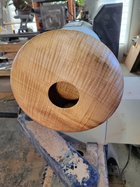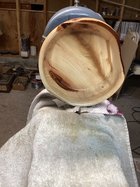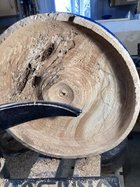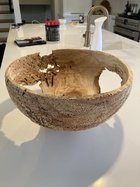Thank you for the kind comments, Alan.I’ve (finally) learned to spray a little shellac on before the CA repair. I’m told sanding sealer works also. I like the spalting or blue rot or whatever it’s called. Nice form.
Regarding the use of shellac as you mentioned, I wish it were that simple. Because it prevents glue from penetrating, it also stops things like oils from doing the same on the sealed areas. It’s fine if you use film finishes, because they don’t penetrate. Film finishes won’t give the highest contrast, which in my mind, is what it’s all about.
Best practice for closing cracks is to be sure it’s done while tools are still being used. That’s where I made the mistake, or misstep. Either I caused the cracks ( miniscule) by allowing the wood to change moisture when on the lathe,,or the cracks were always there, but now visible as the surface quality allows them to be seen.
I could have, probably should have increased the moisture level a bit by misting with water (close the cracks) and just continue work. The finish would stabilize the cracks just fine. I weighed that against the off chance that the cracks would run, and took the safe bet. Shame on me for that!
Choices, choices………






























